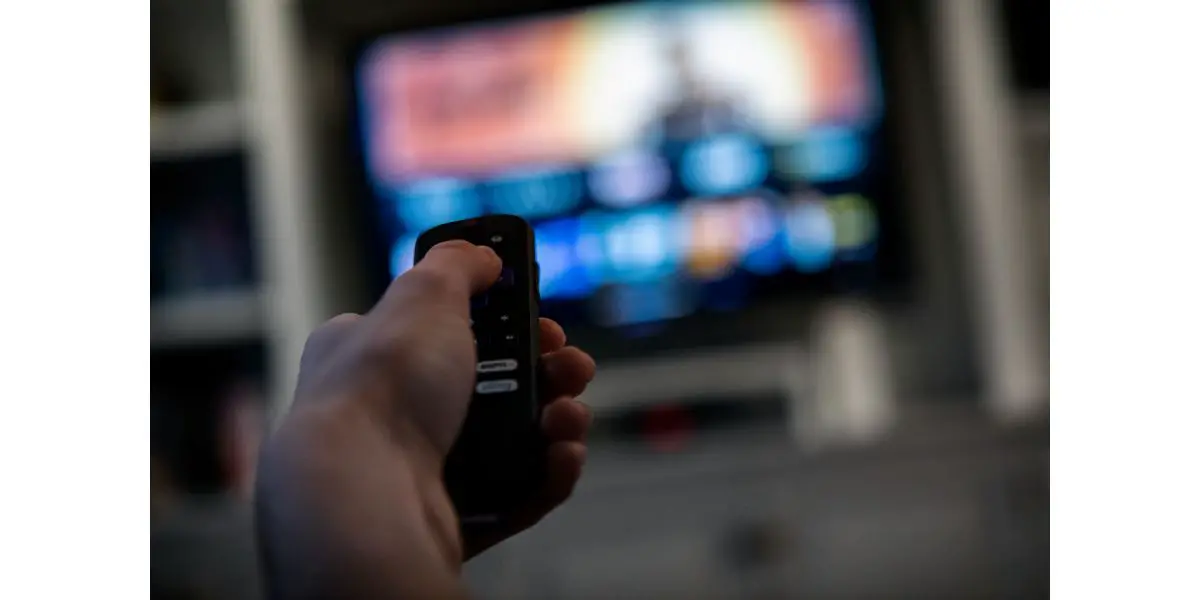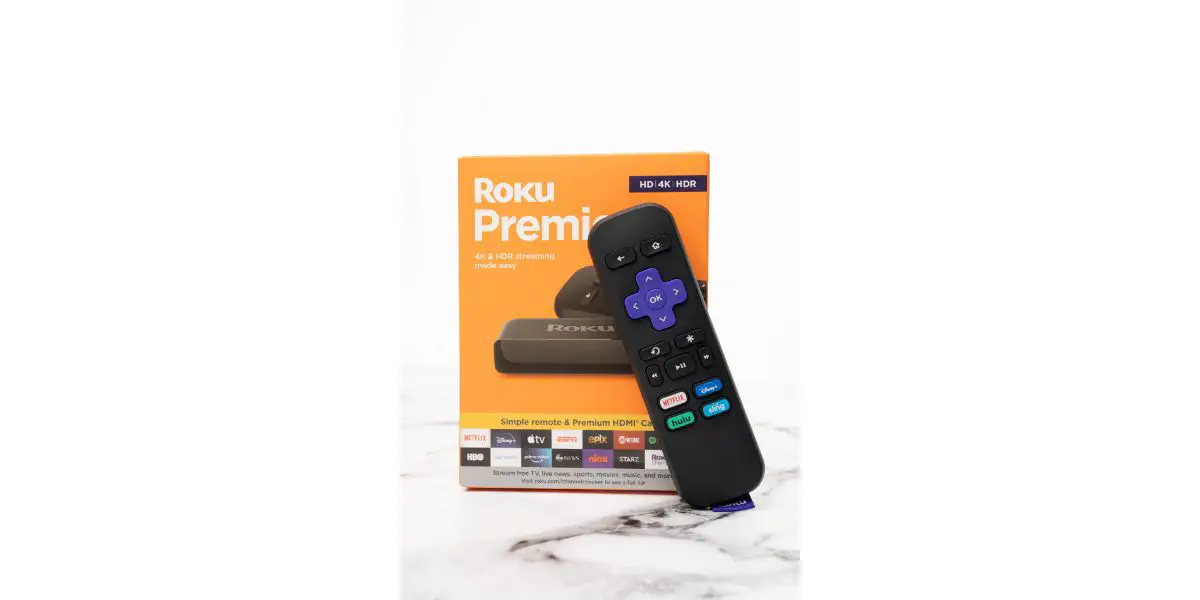Disclaimer: This post may contain affiliate links, meaning we get a small commission if you make a purchase through our links, at no cost to you. For more information, please visit our Disclaimer Page.
Despite the number of smart TVs released each and every year, Apple TV, Google Chromecast, Fire Sticks, and Roku devices continue to be highly popular on the market. There’s a very good reason for that.
You should strongly consider picking up a Roku device to complement your smart TV. While you don’t need it necessarily, it’s typically a far more robust option when it comes to streaming channels. Not to mention the fact that they’re very affordable.
If you do have a smart TV and you decide to throw a Roku device on there, you’ll probably discover (within a very short time frame) that you’re using the Roku device far more often. There are a few reasons for that and it’s not because smart TV manufacturers don’t care.
Table of Contents
It’s All About the Contracts
These TV manufacturers are like video game consoles. They have to work hard to get these various platforms on their devices. Plus, all the different manufacturers have different software. Most of it is a variation of the Android OS but still, it’s different across the board.
Roku devices, on the other hand, aren’t making TVs. Their devices are simple, with a simple OS that’s universal across all of Roku’s products, and their entire focus has been on landing the different streaming platforms on a single Roku.
A smart Tv will come preloaded with several streaming services, most likely the big ones, such as Netflix, Prime Video, Hulu, etc. However, some of the smaller streaming services may not make the cut.
That’s the biggest difference. Like a smart TV, Roku devices typically have several preloaded streaming apps. However, the Roku device app store will have far more options than you’ll find on your TV.
Exclusivity is another issue. Samsung, Sony, and LG are the big three and they are constantly battling one another for exclusive terms with various streaming platforms.
It’s no different than the gaming industry, with Sony, Microsoft, and Nintendo constantly going at it for exclusive games.
Roku Offers a Better User Experience
It’s hard to deny that the primary goal of Sony, LG, and Samsung is to pack the best visual experience into their TVs possible. Operating Systems and user experience play second fiddle to that single factor.
Businesses like Roku can focus on a user-central interactive experience on much smaller platforms. Sometimes, the best experience is just the simplest one and Roku doesn’t try to go too crazy with it.
The menus are easy to navigate, it’s not a jittery, glitchy nightmare, it’s not laggy and rife with various bugs, and the apps you add to it are lined up in a reasonable, easy-to-navigate menu.
Even the settings, audio, and video options are simple to navigate and change at your discretion.
Whether you are connected to a 2.4 GHz or 5.0 GHz bandwidth internet, the streaming content is smooth and, in general, problem-free. The most surprising part about the entire thing is the Roku devices are very affordable.
Roku had a user-focused experience in mind when they set to work on these devices and that hasn’t changed over the course of several years.
Simple Remotes
TV manufacturers still fail to understand that consumers want a remote control to change the channel. Not some 500-button, touchpad interface, infrared, LIDAR thing-a-ma-jiggy that will take an instruction manual as thick as a school book and an entire year to figure out.
Roku, however, is well aware of this. Their buttons are simple, effective, and do what they’re designed to do.
You can expect a home button, a four-directional pad, volume buttons, mute, enter, and quick settings buttons on a Roku remote. In terms of controls for the OS menu, that’s all.
At the bottom of a Roku remote, you’ll find a forward, back, and play/pause button, along with six buttons labeled with streaming providers, such as Netflix, Hulu, etc. These buttons are for instant access to the streaming platforms they correspond with.
Since Roku controllers are not a convoluted mess with a ton of built-in technology, the batteries in them last forever.
You can grab a cheap pack of triple As and you won’t have to worry about batteries in your Roku remote for well over a year, if not years.
Roku is Faster
It doesn’t require 16GB of RAM and a high-end processor to get your streaming platforms and shows up and running quickly. Roku took what it had and made a streamlined, quick experience out of it.
Smart TVs are often not that way. Remember the aforementioned focus on visuals—eye-popping viewing experiences? That’s where TV manufacturers are focused.
Premium 4k smart TVs and 8k TVs are already priced out of range for a lot of people.
If Sony, Samsung, or LG were to throw a high-end processor in there to boot, nobody would buy the TVs. Plus, streaming platforms find it much simpler to refine their apps for the Roku platform, rather than the multitude of new Sony, LG, and Samsung TVs coming out each year.
The one size fits all approach is much easier for developers to contend with, resulting in a smoother, faster experience on Roku devices.
The same thing applies to software updates and patches. It’s easier to roll these out for Roku than it is for multiple platforms that are ever-changing.
Audio and Visual Quality Are Good
Roku offers 4k devices and while they aren’t going to blow any of the big TV manufacturers out of the water, in terms of how well their devices push quality visuals, 4k is more than adequate for most people’s needs.
If you don’t need 4k, there’s no reason to upgrade because even a 4k Roku device will downgrade itself to your TV’s resolution.
If you have a 4k TV but it’s not smart, there’s no reason to upgrade to a far more expensive 4k smart TV. All you have to do is grab a 4k Roku and you’re in business.
Roku Devices Add a Robust Experience
If you already have a smart 4k TV, odds are, you don’t have access to all of the streaming content you want. It’s perfectly fine to purchase a Roku device and pop it into the HDMI port on your smart TV.
Your TV remote should have an “Input” button on it that allows you to switch from your regular TV home screen to the Roku home screen and back again.
Whatever you don’t have on your smart TV, you now have access to it with the addition of the Roku device.
The only drawback to this is you have to switch back and forth with the TV remotes. That can be a pain.
Plus, when you discover that the Roku device has all of the same apps as your smart TV, with a whole lot more, you probably won’t switch back very often.
What Do You Like to Watch?
At the end of the day, it mostly boils down to what you like to watch. If you have just the smart TV and aren’t satisfied with the streaming content, a Roku device makes sense.
If you have everything you want on your smart TV, there’s really no need to pick up Roku. Most smart TVs will come with the biggest streaming services preloaded.
When you get into the Hisense, Toshiba, TCL, RCA, and other, smaller brands, you may miss out on some of the better apps.
If you’re into the smaller streaming services that typically have cult followings (Crunchyroll comes to mind and possibly Shudder), you’ll be able to access those with a Roku.
Plus, there are many free streaming services, such as Crackle, Freevee, Pluto, the Roku Channel, Vudu, and more.
Many of these free streaming apps make money through advertisements but, because they are nowhere near as popular as the Hulus of the world, you might not have some or all of those apps on your smart TV. Roku can potentially change all of that.
Final Thoughts
As mentioned above, much depends on what you want to do with the streaming platforms you have. Do you want more? Do you want to view some of the smaller platforms out there?
Some of these streaming platforms feature up-and-coming artists with a lot of entertainment value to offer.
In short, you should add a Roku device to your TV for several reasons, whether it’s a smart TV or not. You’ll get a faster experience, a more streamlined user experience, access to more streaming platforms, a simplified remote, and a high-quality, affordable device.
Also if you run into troubles such as connecting it to wifi afte


